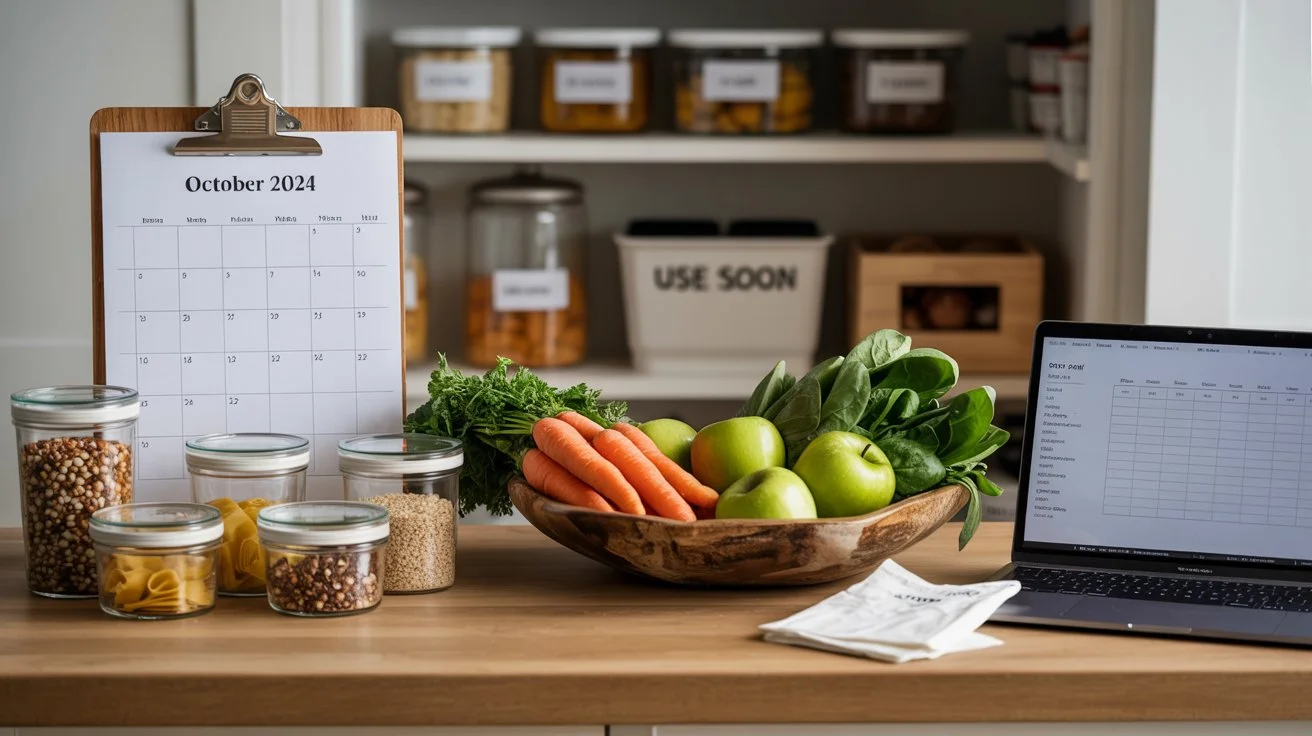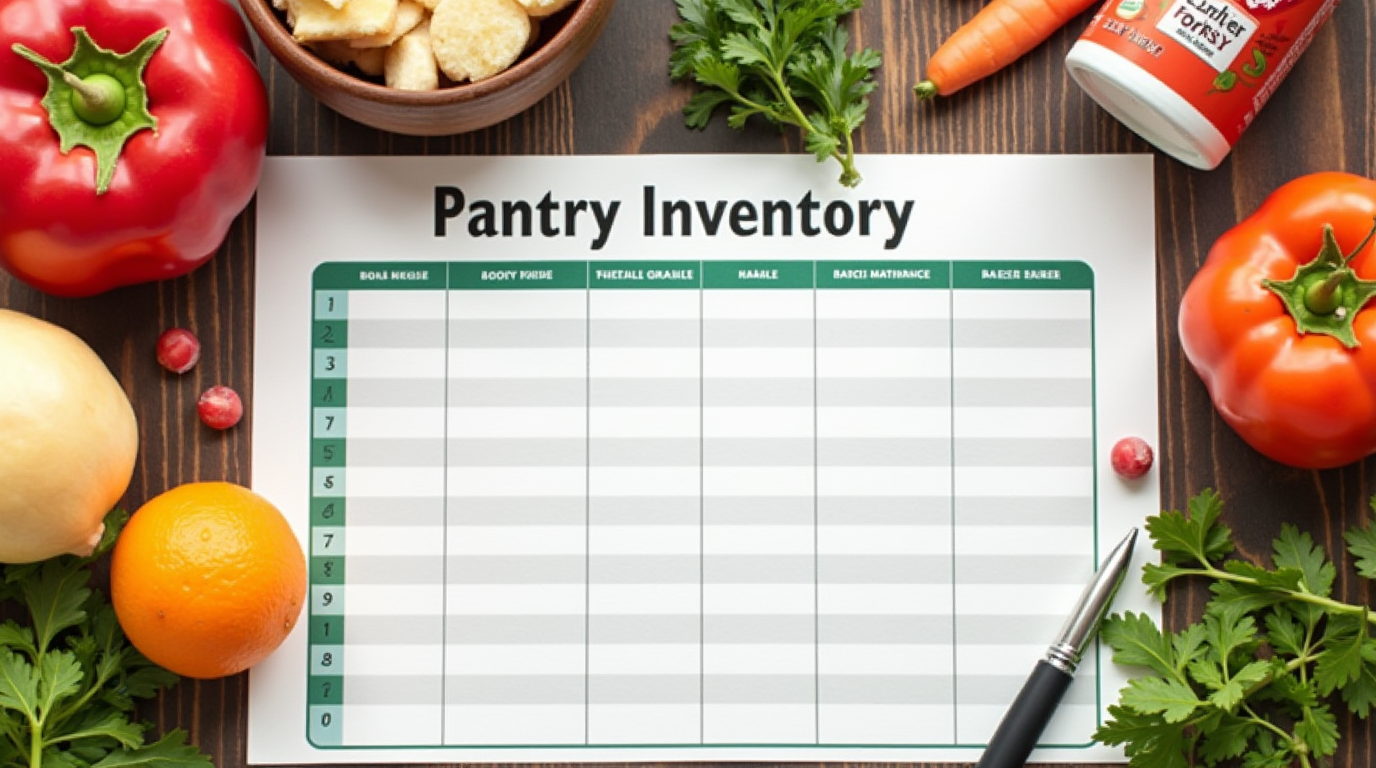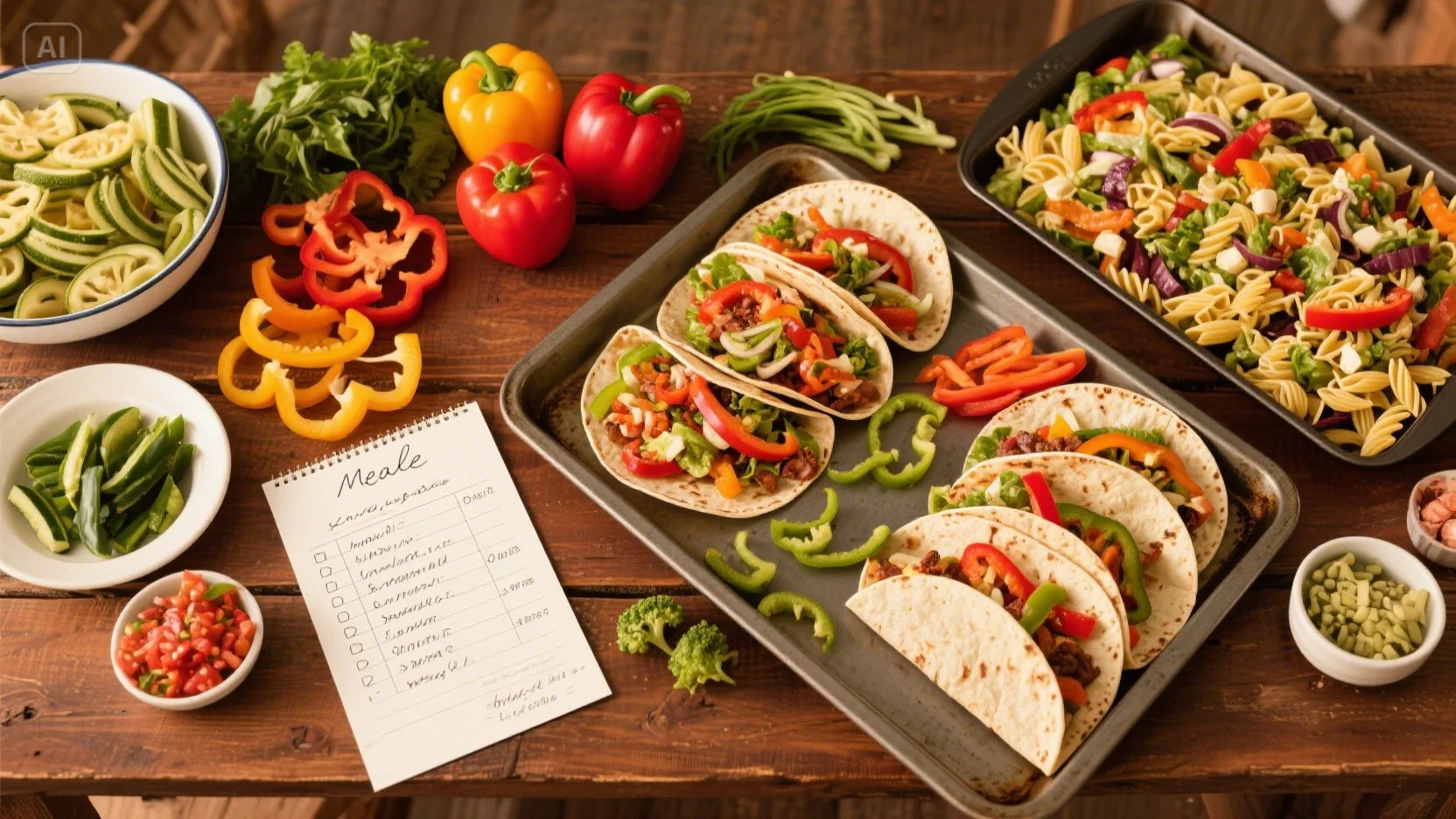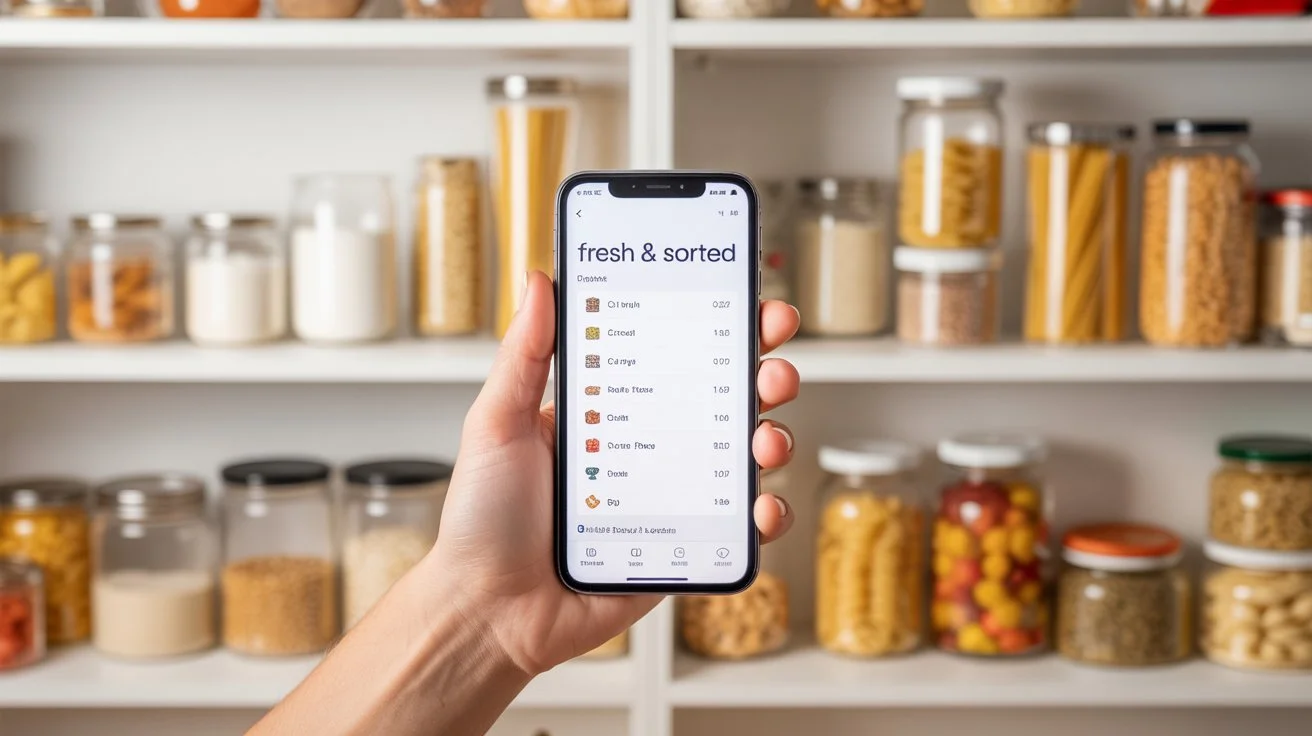Unlock the Secrets of Monthly Meal Planning: 5 Easy Steps to Success
Have you ever opened your fridge to find wilted lettuce, moldy berries, or mysterious leftovers that are well past their prime? You’re not alone. The average American household throws away nearly $1,500 worth of food every year! Weekly shopping without a solid plan often leads to food waste that puts a serious dent in your budget.
Monthly meal planning can change all that. This approach saves countless trips to the grocery store, dramatically reduces food waste, keeps pantries organized, helps control budgets, and—best of all—eliminates the “what’s for dinner” guessing game that happens in many households at 6 PM.
This post will guide you through exactly how to set up a monthly meal planning system that works with your pantry to slash food waste fast. Whether you’re feeding a busy family or just yourself, this approach will transform how you think about food planning and storage.
Why Monthly Meal Planning Makes Sense
When most people think about meal planning, they typically imagine planning just a week ahead. But extending your planning horizon to a full month offers some serious advantages, especially when it comes to reducing waste.
According to the USDA, Americans waste between 30-40% of their food supply. That’s not just bad for your wallet—it’s terrible for the environment too. Monthly meal planning directly tackles this problem in several ways:
Better inventory management: When you plan for a longer period, you’re forced to take stock of what you already have, reducing duplicate purchases.
More strategic bulk purchases: Monthly planning lets you take full advantage of bulk buying without food spoiling before you can use it.
Fewer shopping trips = fewer impulse buys: Every trip to the store increases the chance of unplanned purchases that often end up wasted.
Increased creativity with existing ingredients: A monthly perspective encourages you to find multiple uses for ingredients rather than letting them languish after a single recipe.
Many families who switch from weekly to monthly planning report cutting their food waste by up to 60%—and that’s without being particularly strict about sticking to the plan!
Step 1: Pantry Inventory Assessment
The foundation of effective monthly meal planning starts with knowing what you actually have. Many people have bought canned tomatoes only to find three cans hiding behind the pasta!
Start by taking everything out of your pantry, fridge, and freezer. Yes, everything! Group similar items together and note:
To keep track of your inventory moving forward, consider using a simple method like a pantry inventory sheet on your phone or a physical list inside your pantry door. For tech lovers, apps like Pantry Check can even scan barcodes and track expiration dates.
Pro tip: Pay special attention to the items your household frequently wastes. It might be fresh herbs and specialty condiments that often get forgotten. Once you identify your “problem foods,” you can plan more intentionally around them.
Remember, you can’t use what you don’t know you have! This inventory will become the starting point for your monthly meal plan.
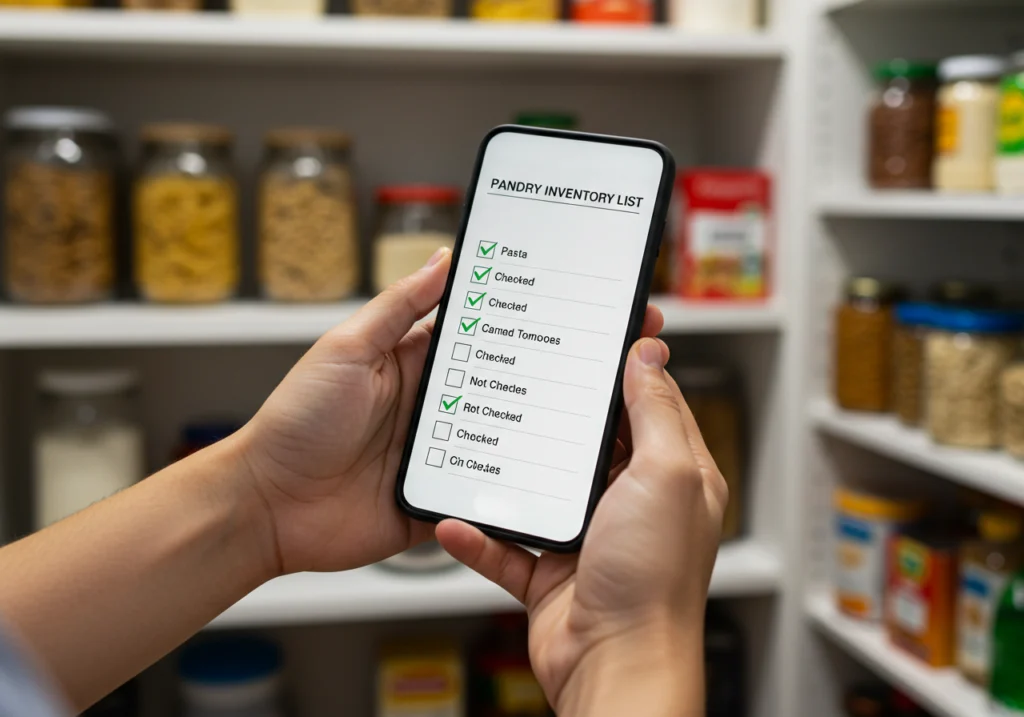
Step 2: Creating Your Monthly Meal Framework
Now for the fun part—setting up your actual monthly plan! Don’t worry, this doesn’t mean deciding exactly what you’ll eat for dinner 30 days from now. Instead, we’re creating a flexible framework.
Start with a simple calendar view for the month. You can use:
The secret to making monthly planning manageable is incorporating theme nights. Consider options like:
This structure provides enough guidance to plan but enough flexibility to adapt based on what’s in season or on sale.
Next, build in what savvy planners call “strategic leftover nights.” These are meals intentionally cooked in larger portions to create planned-overs for another meal. For example, a Sunday roast chicken becomes Tuesday’s chicken tacos and Wednesday’s chicken pasta.
Don’t forget to be realistic about your schedule! Mark days when you know you’ll eat out or order in. There’s nothing more wasteful than planning meals that never get cooked because life got too busy.

Step 3: Smart Shopping for Your Monthly Plan
With your plan in place, it’s time to shop—but not all at once! The key to monthly meal planning without waste is dividing your shopping into:
Monthly bulk shopping: Once a month, stock up on non-perishables, pantry staples, and freezer items that support your meal framework. This includes dried beans, grains, pasta, canned goods, and frozen vegetables.
Weekly mini-trips: Reserve these quick stops for fresh produce, dairy, and other perishables that won’t last a full month.
Before each shopping trip, take inventory again and create a master list organized by store section. This prevents wandering (and impulse buying!) while ensuring you don’t miss anything essential.
When deciding what to buy in bulk versus weekly, consider these guidelines:
The beauty of this system is that you’re buying exactly what you need for your planned meals—nothing more, nothing less. This naturally reduces waste while maximizing your food budget.
Many families of four have cut their monthly grocery bills by almost 25% while virtually eliminating food waste with this approach. That’s a win-win anyone can get behind!

Step 4: Pantry Organization That Prevents Waste
All your planning will go to waste (literally!) if you can’t find and use what you buy. Proper pantry organization is crucial for reducing food waste.
The most important system to implement is FIFO—First In, First Out. This means placing newer purchases behind older ones, ensuring you use older products before they expire. This simple habit has saved countless cans and packages in many households from being thrown away unused.
Visibility is another key factor. Consider using:
Create a dedicated “use soon” zone in both your pantry and refrigerator. This is where you’ll place items approaching their expiration date—making them the first things you see when looking for ingredients.
For more detailed organization strategies, check out our comprehensive guide to [Internal Link: Ultimate Pantry Organization Systems].

Step 5: Executing Your Plan With Flexibility
Even the best-laid plans need wiggle room! The key to successful monthly meal planning is building in flexibility from the start.
Schedule bi-weekly “pantry clean-out” meals where you deliberately use up odds and ends. These are often called “whatever” meals—soups, stir-fries, or grain bowls that can incorporate almost any ingredient that needs using up.
When plans inevitably change (hello, unexpected late work night!), have a backup strategy:
A simple meal prep routine can support your monthly plan. Every Sunday, spend about an hour prepping ingredients you know you’ll use throughout the week—chopping vegetables, cooking a batch of grains, or roasting a chicken. This front-loaded work makes it much more likely that you’ll actually cook your planned meals even on busy weeknights.
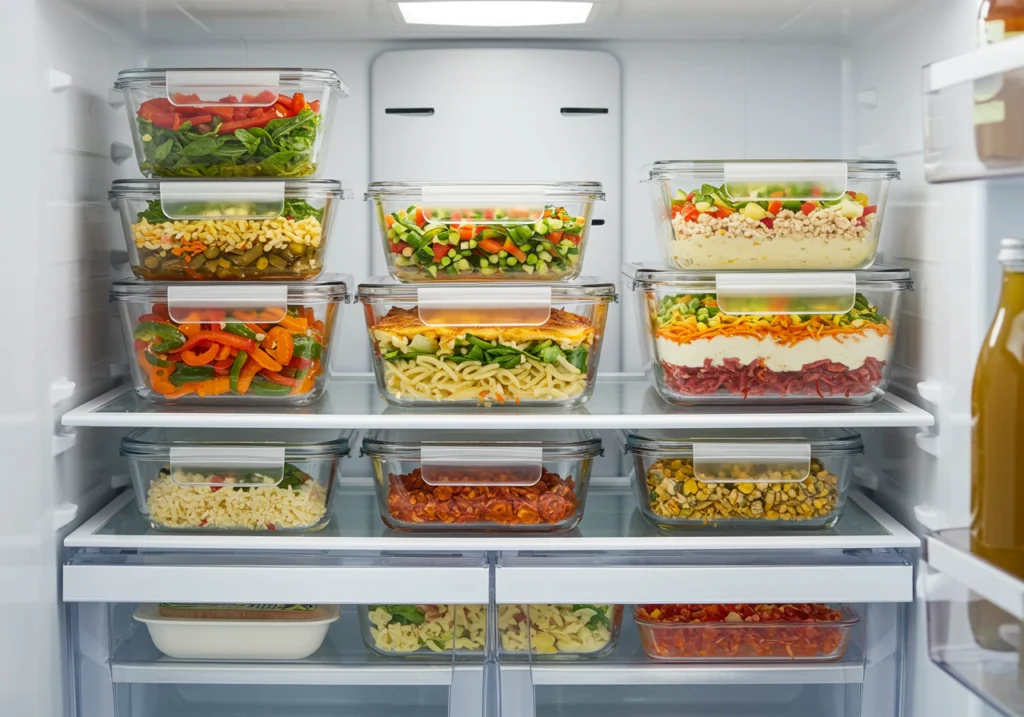
Conclusion
Monthly meal planning might sound intimidating at first, but it’s truly one of the most effective ways to slash food waste while saving time and money. By taking inventory, creating a flexible framework, shopping strategically, organizing your pantry, and executing with room for real life, you’ll transform your relationship with food planning.
Start small if you need to—perhaps with just two weeks of planning—and build up as you get comfortable with the system. The most sustainable changes are the ones that actually fit your lifestyle!
Share your monthly meal planning tips and tricks in the comments below, or share your biggest food waste challenges. And if you found this helpful, don’t forget to check out our related guides on Smart Shopping on a Budget and Food Inventory Management System.
Remember, every bit of food saved from the trash is a win for your wallet and our planet!
Pro Tips
- Use the “Eat This First” Box: Place a small bin in your fridge labeled “Eat This First” for items that need to be used quickly.
- Batch Cook and Freeze: When fresh ingredients are abundant or on sale, prepare double batches and freeze half for later in your monthly plan.
- Create a “Quarter Plan”: If monthly seems too daunting, create a 3-month rotation of favorite meals that you can repeat each quarter with seasonal adjustments.
- Invest in Vacuum Sealing: For households that rely heavily on freezing, a vacuum sealer can extend the freezer life of foods by months, reducing freezer burn waste.
- Maintain a “Pantry Staples” Recipe Collection: Keep a list of 5-10 meals you can make entirely from pantry and freezer ingredients for when fresh food runs low.
FAQs
How much time does monthly meal planning take?
The initial setup might take 2-3 hours, but once your system is in place, you’ll spend about 30-45 minutes planning each month—far less than the time spent on daily “what’s for dinner” decisions or extra grocery trips!
Won’t fresh produce go bad if I plan for a whole month?
That’s why we use a hybrid approach! Plan your meals for the full month, but shop for fresh produce weekly. This gives you the organizational benefits of monthly planning while ensuring fresh ingredients.
What if my family doesn’t like eating the same meals regularly?
Theme nights provide structure without repetition. For example, “Taco Tuesday” could mean beef tacos one week and fish tacos the next. The theme stays consistent while the specific meal varies.
Can monthly meal planning work for special diets?
Absolutely! In fact, it’s often easier to accommodate special diets with monthly planning because you can ensure variety and proper nutrition over a longer timeframe rather than scrambling for compliant meals daily.

